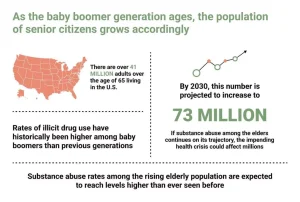
There are two main types of triggers that can start someone towards the path of relapse. Often, relapse will be preceded by a trigger that causes someone to start thinking about relapsing or creates a craving for a substance that was previously used. These triggers can be difficult to recognize and can completely disrupt a recovery if they lead to relapse. Recognition and avoidance of potential triggers will be a key part of any recovery process.
Practice Management, EHR/EMR and Teletherapy Platform

To avoid relapse, it is important to understand the risk factors and causes that typically lead to relapse. Understanding these risk factors will help you to avoid the potential risk of relapse during or following recovery. Triggers can cause a person to struggle with unwanted thoughts, feelings, and impulses. This is why it is important to help a client become aware of their triggers.
- An emotional triggers worksheet helps improve emotional regulation and mental health.
- For those struggling with substance abuse and addiction, it isn’t uncommon for the affected person to return to alcohol or drug use.
- This can be anything from certain social situations, responsibilities, and even specific places that trigger your desire to use again.
Triggers and Coping Skills

Keeping track of your experiences and what was happening before you began to experience symptoms can help you better understand your triggers. External triggers are situations or objects in your environment, while internal triggers emerge from inside of your own body. An urge to drink can be set off by external triggers in the environment and internal ones within yourself. When you are exposed to a potential trigger, the cravings will pass within a few hours if you resist the urge to relapse.
Benefits of Free Emotional Triggers Worksheet
Use this worksheet when you are feeling anxious, stressed, or frustrated and need a tool to help you identify what is causing these feelings. Choosing coping strategies that work best for you and that you feel comfortable with is important. You can also experiment with different strategies to find what works best in different situations. By developing coping strategies, you can take control of your emotional responses and reduce the impact that triggers have on your life. Our Triggers worksheet will introduce your clients to triggers with a simple definition and tips, while guiding them through the process of identifying their own triggers.
- It’s essential to be honest with yourself when describing your reaction, as this can help you identify the coping strategies that will work best for you.
- It can also help them prepare for being confronted with their trigger so their reaction is less intense.
- The way that the brain links memories is a powerful tool that is used to help you recall important information, but that may also affect your recovery process.
- A part of helping them understand why they are feeling uncomfortable is understanding what causes the discomfort.
- The client is then instructed to answer reflection questions for each trigger.
Once you have identified your emotional triggers, you can use the worksheet to create a plan for managing them effectively. Whether your triggers are emotional distress or a specific situation, it is essential that you know what compels you to use when trying to lead a life of sobriety. Understanding what triggers you to relapse and having a plan in place for these triggers are your first steps toward prevention. A post-traumatic stress disorder (PTSD) trigger can include any sound, sight, smell, thought, or another reminder of a traumatic event. Such triggers are sometimes apparent, but they can also be subtle and more challenging to identify. As you change your drinking, it’s normal and common to have urges or a craving for alcohol.
- Reflect on what the client has learned about themselves and provide them with a copy of the worksheet for reference.
- Identifying triggers is a technique used in cognitive-behavioral therapy (CBT) to help people recognize and manage their emotional triggers.
- In addition, some new, non-addictive medications can reduce the desire to drink or lessen the rewarding effect of drinking so it is easier to stop.
- Understanding these risk factors will help you to avoid the potential risk of relapse during or following recovery.
- One way of coping with these symptoms is by increasing your awareness of these triggers.
- Once you have identified your triggers, reflect on how you typically respond when confronted with them.

The Recovery Village has a strong record of helping people with substance use disorders to achieve recovery. Reach out to one of our understanding team members today to learn how you can start on your path to recovery. The client builds self-awareness by practicing these self-reflection questions.

For example, a news report covering a trauma similar to what you experienced might trigger symptoms of PTSD. However, other cues are more subtle reminders that you might not even notice until after you’ve had a negative reaction. Explore what sets you off through this free Identifying Triggers Worksheet PDF. Enhance your self-awareness through this printable internal vs external triggers worksheet and learn how to control your triggers. When you choose to get treatment at North Georgia Recovery Center, you can rest assured knowing that you will be treated by licensed therapists in our state-of-the-art facilities. Every one of our team members is certified to address and effectively treat the issues that come along with addiction.

Keep a journal and write down situations that trigger strong emotions. The Identifying Triggers Worksheet is designed to help in identifying your triggers, understand why they trigger you, and learn how to manage them effectively. By completing the worksheet, you will gain insights into your emotional responses and behaviors and be better equipped to cope with challenging situations. The Identifying Triggers worksheet is a valuable resource to use whenever you feel overwhelmed or stuck in a particular pattern of behavior. It can help you better understand your emotions’ underlying causes and provide a starting point for creating a plan to manage them effectively.
When an addicted person uses drugs or alcohol for a prolonged period of time, it changes the brain—eventually associating certain stimuli with the desire to drink or do drugs. For example, you might inadvertently come into contact with a news story or conversation that reminds you of your traumatic event. If you are having a very difficult time with urges, or do not make progress https://ecosoberhouse.com/ with the strategies in this activity after a few weeks, then consult a healthcare professional for support. In addition, some new, non-addictive medications can reduce the desire to drink or lessen the rewarding effect of drinking so it is easier to stop. If you or a loved one has experienced a relapse, or are just considering treatment options, we are here to help you.
Cope with triggers you can’t avoid.
They can learn how to manage their emotions and develop healthier coping strategies by identifying triggers. The Identifying Triggers Worksheet is a simple yet effective resource for anyone looking to manage their emotional triggers. A Trigger Worksheet helps people identify their own triggers, understand their reactions to them, and develop coping strategies to manage their emotions. Fortunately, urges to drink are short-lived, predictable, and controllable.
